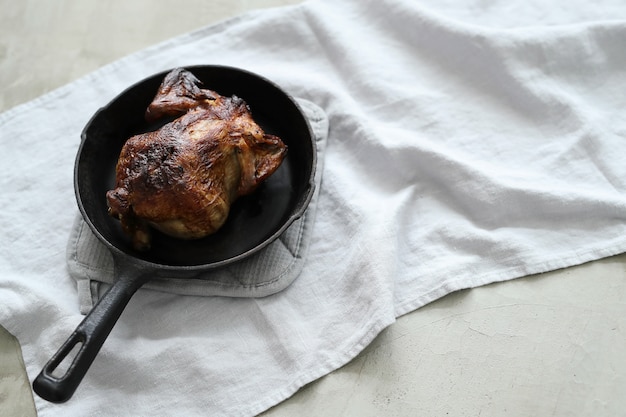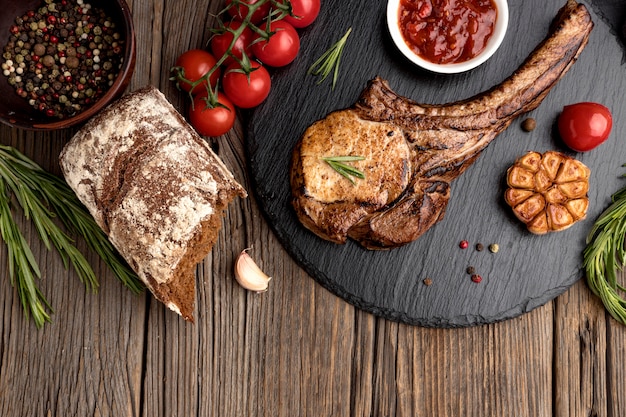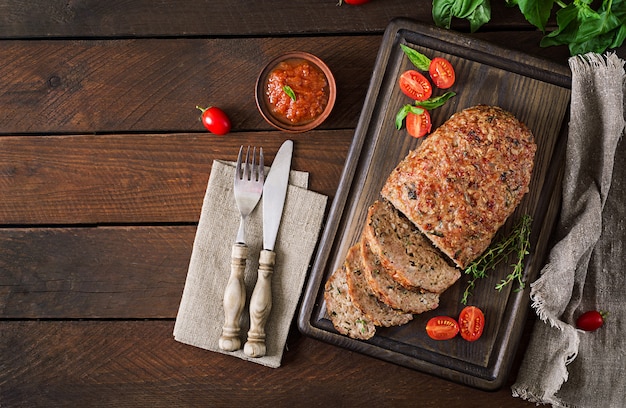Part 1: Choosing the Right Cut

The Anatomy of a Pork Roast
Okay, let's start by understanding the different cuts of pork available. Each cut has its own unique texture, flavor, and cooking time, so it's crucial to choose the one that best suits your needs and preferences.- Shoulder (Boston Butt or Picnic): This is a workhorse in the kitchen, known for its affordability and rich flavor. Shoulder roasts often come with a beautiful layer of fat that renders down during cooking, imparting incredible juiciness. However, they can be a bit tougher than other cuts.
- Loin: Loin roasts are leaner and generally considered more tender than shoulder roasts. They cook quickly and are perfect for those who prefer a leaner, more delicate roast.
- Rib: The rib roast, a true showstopper, is prized for its exceptional tenderness and rich flavor. It's a cut that's typically reserved for special occasions due to its higher price point.
Shopping for the perfect pork roast
Now, you've got your eye on the perfect cut. But how do you choose the right roast for your meal? Here's what I look for:- Color: A good pork roast should have a pale pink color. Avoid any that look gray or have a brownish tinge.
- Fat: A good layer of fat is crucial for a juicy, flavorful roast. Look for a good marbling of fat throughout the meat.
- Bone: The bone should be intact and free of any cracks or breaks.
Part 2: Preparing Your Pork Roast

The Power of Seasoning
Here's where the magic really begins! Seasoning your pork roast is an art form, and it's the key to unlocking those incredible flavor profiles. My go-to seasoning is a simple blend of fresh rosemary, thyme, garlic powder, and a pinch of salt and pepper. But feel free to experiment! There's no right or wrong way to season your pork, so get creative and have fun with it.Here's a little tip from my grandmother: a dry rub not only adds flavor but also helps to keep the roast moist during cooking. Mix your chosen spices with a bit of olive oil to create a paste, and gently rub it all over the roast. Then, pop it in the fridge for a few hours to allow the flavors to really penetrate the meat.As for marinades, while I'm a firm believer in the power of dry rubs, I generally avoid marinades for pork roasts. They can sometimes make the meat too soft and mushy. But if you're a marinade fan, stick to simple blends like olive oil, lemon juice, and garlic.Tying the Roast: A Beauty and Functionality Tip
Tying your pork roast might seem like an extra step, but it's a game-changer. It helps the roast maintain its shape during cooking, resulting in a more even cook and a beautiful presentation. You can find butcher's twine at most supermarkets, and it's incredibly easy to use. Simply tie the twine around the roast at regular intervals, like you're tying a ribbon around a present.Part 3: Roasting Your Pork Roast

Oven Temperature: The Goldilocks Zone
Alright, now we're getting to the heart of the matter. For a perfectly cooked pork roast, it's essential to find that Goldilocks zone of oven temperature. I always aim for 325°F (160°C). This temperature ensures the meat cooks evenly and stays incredibly moist.Cooking Time: A General Guide
Now, the cooking time will vary depending on the size and thickness of your roast. A good rule of thumb is about 20-30 minutes per pound. But don't just go by time alone. The true secret weapon is a meat thermometer. This little tool is your best friend, ensuring you don't overcook your roast.The Art of Basting
While your roast is in the oven, don't forget to baste it every 30-45 minutes. Basting helps keep the meat moist and adds a beautiful glaze to the exterior. My go-to basting liquid is a mixture of pan drippings and broth. It adds so much flavor!Rest Time: Patience is a Virtue
Once the roast is cooked, it’s essential to let it rest for at least 15 minutes before carving. This allows the juices to redistribute throughout the meat, making it even more tender and flavorful. Resist the urge to carve immediately – the extra few minutes of patience will be well worth it.Part 4: Perfect Pork Roast side dishes
Classic Companions
You've got your beautiful, perfectly cooked pork roast – now you need the perfect side dishes to round out your meal. My go-to pairings are roasted vegetables and creamy mashed potatoes. The sweetness of the vegetables plays beautifully against the savory pork, and the mashed potatoes are a comforting classic.Something a Bit Different
But don't be afraid to step outside the box! A simple green salad with a tangy vinaigrette or a fruit salad with a touch of mint and honey adds a lovely freshness to the meal.Part 5: The Art of Leftovers
Transforming the Roast
The beauty of a good pork roast is that the leftovers are just as delicious as the original meal. I love to transform leftover roast into a hearty pork and vegetable stew or a delicious sandwich with some leftover roast, onion gravy, and some crunchy pickles.Storing and Freezing
When storing leftovers, refrigerate them within 2 hours of cooking and use them within 3-4 days. You can also freeze leftover pork roast for up to 2 months. Wrap it tightly in plastic wrap and foil before placing it in the freezer.Part 6: The Ultimate Glaze
Elevate Your Roast with a Glaze
A good glaze takes your pork roast from good to absolutely brilliant. My personal favorite is a simple honey mustard glaze. It's sweet and savory and coats the roast beautifully. But if you're feeling adventurous, try a glaze made with apple cider, brown sugar, and cinnamon.Glazing Techniques
The best time to glaze is during the last 30 minutes of cooking. This allows the glaze to caramelize and create a beautiful, crispy crust. Brush it on the roast every 10 minutes or so for a truly irresistible finish.Part 7: Common Mistakes and How to Avoid Them
Overcooking: The Dryness Disaster
One of the most common mistakes people make is overcooking the pork roast. This can leave you with dry, tough meat. Remember, the key is to cook it to an internal temperature of 145°F (63°C). A meat thermometer is your best friend!Not Resting the Roast: The Juicy Secret
Another mistake is not letting the roast rest before carving. This crucial step allows the juices to redistribute throughout the meat, resulting in a tender, juicy masterpiece.Not Basting: The Moisture Must-Do
Don't forget to baste your roast while it's cooking. This helps to keep the meat moist and adds a lovely glaze to the exterior.Part 8: Serving and Enjoying Your Masterpiece
Carving and Presentation
The moment of truth! It's time to carve your masterpiece. I love to use a sharp carving knife to slice the roast into thin, even slices. And don't forget to serve it with your chosen side dishes. I like to arrange the roast slices on a platter, with the vegetables and potatoes alongside.The Final Touch
For that extra touch of elegance, I love to garnish the roast with some fresh herbs, like rosemary or thyme. And a drizzle of gravy never hurts.Part 9: FAQs
Q: What if my roast is too big to fit in my oven?
A: If your roast is too large for your oven, you can try cooking it in two parts. Simply cut the roast in half lengthwise and cook each half separately. Or, consider using a large roasting pan.Q: Can I cook the roast in a slow cooker?
A: Absolutely! A slow cooker is a fantastic way to cook a pork roast, resulting in a tender, fall-apart roast. Cook it on low for 6-8 hours or on high for 3-4 hours.Q: How do I know if the roast is done?
A: The best way to know if your roast is done is to use a meat thermometer. It should reach an internal temperature of 145°F (63°C).Q: What if the roast is dry?
A: If your roast is dry, try adding some broth or pan drippings to the roast while it's cooking. Or, you can add moisture to the roast after it's cooked by basting it with a mixture of broth and butter.Q: Can I cook a pork roast in a pressure cooker?
A: You can, but I wouldn’t recommend it for a bone-in roast. A pressure cooker works best for boneless roasts, as it can make the bone tough and difficult to remove. So there you have it, my ultimate guide to cooking a bone-in pork roast to perfection. I hope you've found it helpful and inspiring. Now get out there and create your own culinary masterpiece! Let me know how it goes, and remember, even if it doesn't turn out perfectly, the most important thing is to have fun and enjoy the process. Happy cooking!Everyone is watching

Prime Rib Roast Cooking Time Chart: Per Pound Guide
Cooking TipsPrime rib roast. Just the name conjures images of lavish dinners, crackling fires, and hearty laughter. It’s ...

How Long to Bake Potatoes in the Oven (Perfect Every Time)
Cooking TipsBaked potatoes are a staple in my kitchen. They're incredibly versatile, delicious, and surprisingly easy to m...

Perfect Rice Every Time: The Ultimate Guide to Cooking Rice
Cooking TipsAs a self-proclaimed foodie, I've always been a bit obsessed with rice. It's the foundation of countless cuisi...

The Ultimate Guide to Cooking Asparagus: Tips, Techniques, and Recipes
Cooking TipsAsparagus. The mere mention of this spring delicacy conjures up images of vibrant green spears, crisp and burs...

Ultimate Guide to Cooking the Perfect Thanksgiving Turkey
Cooking TipsThanksgiving. Just the word conjures up images of overflowing tables laden with delicious food, the scent of r...
